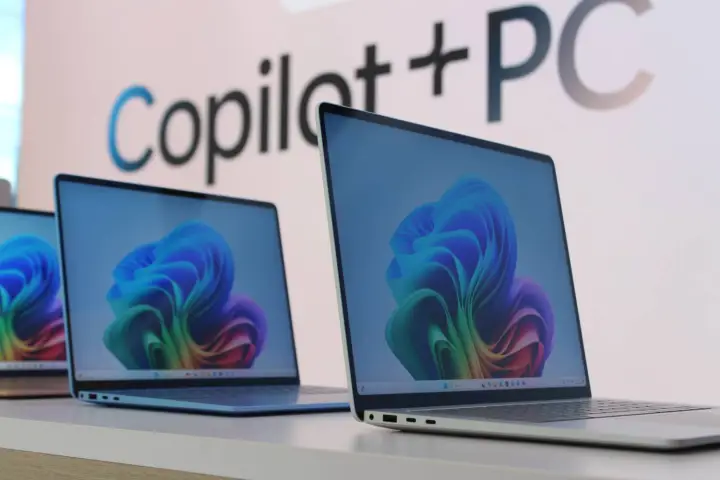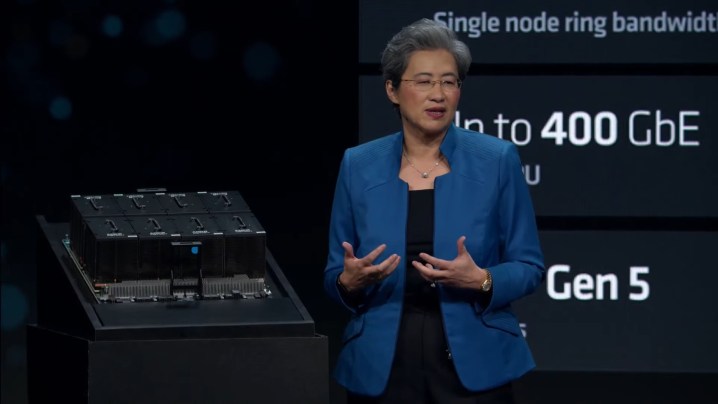
Microsoft has often taken a backseat in driving the direction of the PC industry. But that time is over.
Over the past couple of weeks, we’ve had a front row seat in seeing just how much power Microsoft has within the PC industry. Of course, developing the primary operating system used across millions (billions?) of devices gives you a lot of say, but the introduction of Copilot+ and the hardware announcements that followed show what can happen when Microsoft flexes its muscle.
Even with AMD and Intel getting a head start on this new era of AI PCs, Computex proved they’re on the back foot. AMD and Intel are rushing to meet Microsoft’s demand for Copilot+, and in the process, they’re breaking release cadences and traditions they’ve maintained for several generations.

Get your weekly teardown of the tech behind PC gaming
Breaking release cycles

The strongest evidence of Microsoft’s impact is AMD. For the first time ever, AMD is leading with its Strix Point laptop CPUs instead of its new Ryzen 9000 desktop CPUs. It’s no secret that Intel holds a dominant position in laptops over AMD, which usually pushes Team Red to release a new architecture on desktop first. That’s not the case this time around.
That comes down to the requirements Microsoft has for the Neural Processing Unit (NPU). Although we’ve seen NPUs from AMD and Intel, Microsoft requires an NPU with at least 40 Tera Operations Per Second (TOPS) worth of power. Strix Point satisfies that criteria, as does Intel’s upcoming Lunar Lake chips. Previous Intel and AMD chips, despite sporting an NPU, fall short of the power requirement.

Although AMD’s shift to release its laptop chips first is the most telling, Intel isn’t absent from this conversation. It’s releasing its Lunar Lake chips ahead of schedule. Last year, we saw Meteor Lake CPUs launch at the very end of the year, but Intel is releasing Lunar Lake in the third quarter of 2024. By the end of this year, we’ll likely have dozens of Lunar Lake and Strix Point laptops — we already saw a bunch of them at Computex.
It’s clear Intel is jumping the gun a bit, too. Although we have all of the juicy details on Lunar Lake as an architecture, Intel hasn’t shared any specific models. It also hasn’t detailed performance, outside of claiming the chips will be “competitive” with the Snapdragon X Elite.
In the context of Copilot+, it’s hard to see these shifts as anything other than AMD and Intel getting in on the hype. Copilot+ PCs represent more than a new class of laptop for Microsoft. It represents a shift in how we think about laptops, and AMD and Intel don’t want to be absent from that conversation.
Hurt feelings

There’s a more personal drive here, too, specifically for Intel. Intel has been the linebacker for Microsoft for decades, with its dominance in laptops leading to an endless stream of co-marketing and promotion campaigns. And it’s clear Intel isn’t happy about how Microsoft kicked off Copilot+.
I’m here on the ground in Taipei. During a Q&A session following Intel’s keynote, one reporter asked Michelle Johnston Holthaus, Intel’s executive vice president of client computing, about the Snapdragon X Elite. You could feel a dark cloud in the room. A beat passed. Holthaus picked up the microphone with a sigh.
It’s no secret that Microsoft has been wanting to get Windows on ARM working for years, and now that it can do so with the biggest buzzword in tech, it took the opportunity. Intel, at the very least, seemed blindsided, and I imagine AMD is in a similar boat. After all, AMD and Intel were first to the party with AI processors for Windows, and now they’re all but irrelevant.
For Intel, it says it’s waiting on some sort of update for Copilot+, where machines packing its hardware can receive all of the features available to the Snapdragon X Elite. Laptop makers aren’t slowing down, either. They’re all packing the dedicated Copilot key and AMD and Intel’s latest AI CPUs. In response to the question, Holthaus said: “I believe by the time we’re in market, we’ll ship more than our competitors combined.” That sounds like a company that’s frustrated and ready to fight.
I haven’t heard AMD speak publicly about it, but all of its Computex slides announcing its new Ryzen AI chips include “Copilot+” somewhere. I have to imagine it holds similar feelings.
New eras

To match the new push for Copilot+ PCs, both AMD and Intel have rebranded their mobile CPUs. The naming scheme is simplified, shorter, and with a clear focus on AI. After all, can you really expect a normal shopper to know that the Core i9-13980HX is supposed to be better than the Snapdragon X Elite?
Changing nomenclature might not seem signficant at first brush, but it’s a massive change for companies like AMD and Intel. These types of rebrands only happen once in a decade, and even that’s rare. There may be some slightly different conventions — such as what we saw with the introduction of Ryzen 8040 CPUs — but a full-on overhaul doesn’t come often.
It’s AMD and Intel realigning, trying to show customers who don’t keep up with endless product strings that their chips can leverage the AI features available to Copilot+. That gets a lot more information across to a lot more users than quoting how many TOPS the NPU is capable of.
Flattening the curve

Microsoft is pushing, and AMD and Intel are trying to catch up. Eventually, everything will even out. Microsoft has already said AMD and Intel will eventually be apart of the Copilot+ ecosystem, so come Computex next year, any warping that Microsoft is inflicting will likely be invisible.
Still, it’s an impressively clear showcase of how much power Microsoft really has. It’s taken two companies that usually have their product cycles planned years in advance and kicked them into panic mode. Hopefully we don’t see a repeat once Microsoft finds it fit to bring Copilot+ to desktops.
Editors’ Recommendations

